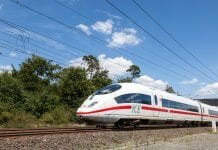
Uber CEO Dara Khosrowshahi has announced plans to integrate the app into London’s public transport system.
Despite the company having its licence to operate its taxi service in the city revoked last year over concerns about the welfare of its drivers, Khosrowshahi hopes Uber will win back public trust by integrating into London’s public transport system and providing its mobility as a service solutions.
Speaking at a Goldman Sachs conference yesterday, the company’s CEO offered an example of how the integrated system might work: “I want [Uber] to run the bus systems for a city. I want you to be able to take an Uber and get into the subway… and get out and have an Uber waiting for you.”
What services do Uber operate in London?
Uber already operates smart mobility as a service solutions with its uberHOP and uberPOOL services, which facilitate ridesharing and carpooling through the app. Alongside these products, the company has also trialled bike-sharing, and currently offers a food delivery service.
Its newest plan, which would take advantage of a new $9bn investment agreed in December, and also included an announcement of an express service, which would cut down on detours and backtracking by offering discounts to users who are willing to walk a short distance.
Does London’s public transport system need Uber?
The announcement comes only a few days after BBC analysis showed that the UK’s bus network has shrunk to its lowest levels in 28 years. A combination of rising car use – which could be driven in part by apps such as Uber – and cuts to public funding are responsible for reducing coverage.
In fact, some 134 million miles of bus service coverage have been lost in the UK in this decade alone. However, in London, bus coverage increased over the past decade, meaning that there is significant scope for Uber to take advantage of this expansion and integrate its mobility as a service products into London’s public transport system.


















